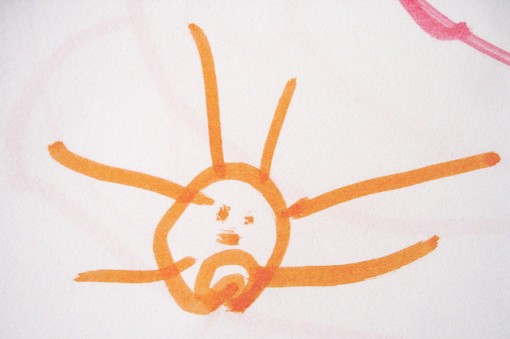1. Already Dead Girls
Already Dead Girls are easy to write; they do not require speech or action or emotion or growth.
They have been hoisted up, trussed, their hands starred out against a dark background. The men leave them dangling from ceilings or trees or hog-tied on the ground or yoked to bedposts, forgetting them as they forget roadkill, a rotted portion of scenery. The camera lingers on Already Dead Girls because their beauty is in their silence, in the space they do not take up, the bodies they no longer own.
Already Dead Girls are more dead than girl. They are lands waiting to be colonized. The husks of Already Dead Girls are the most valuable commodities in the world.
2. Dead Schoolgirls
A Dead Schoolgirl is Significant, forces Male Protagonist to remember his own Dead Child, his own Sorrowful Past. Proves Something Good still exists in him, the same way handing money to a homeless man does, or saving a cat from traffic.
Dead Schoolgirls never emerge from adolescence. Instead of blooming into young women, they blossom into bruises. They are the martyrs of Male Sins, so the brutality is more important than the girl. Because Male Protagonist needs something to react to, something to recoil from.
Even Male Protagonist is proven to be Sensitive, to be Good, by the deaths of Dead Schoolgirls.
The point of Dead Schoolgirls is to never exist. To be a void in a family photograph, an absence of footsteps, a house at which a school bus no longer stops. Their impact is in what they will not do, the women they will not become.
3. Sick Girls
Sick Girls are gentle creatures. They are brave. They look perfect in hospital beds, as though they have always lived there. They move so little that they are like jellyfish in aquariums, bobbing, strange and luminous and deflatable.
Sick Girls do not have wishes for themselves, only for their men, only after they are gone. Their victimhood is clear. They wear it draped over their bodies in lips so chapped it is like they are covered in spun sugar and faces made angelic by hollowness and veins the color of blue sky, veiled by translucent cloud skin.
For there is no ugliness in Sick Girls. There is only a suggestion of pain, a ghost of discomfort, a specter rattling pans and shifting furniture just out of sight.
4. Victims
Victims are white. They are vaguely Christian, probably virgins, conventionally pretty, with features that could be molded from any number of women. Sometimes they wear crosses on gold chains that are so thin they shimmer like seams of water.
Victims are not humans but receptacles of pain. And they have done nothing to deserve this violence, these unicorns of women. They are innocent in the way babies are—never quite actualized, never making decisions, never acting on their own.
Victims are the color of snow, the unpainted cheeks of dolls. They are checkboxes ticked by their relationships to men: Daughter, mother, sister, wife.
5. Not Victims
Not Victims are at fault, somehow, for walking alone or leaving their drinks unattended or going home with a stranger. Everything about them says they were asking for it, and this way no one actually needs to speak the words.
Their smudged lipstick, their dark nebulae of eyeshadow, all a Rorschach test, reflecting. The men do not touch them with care; their necks are like the necks of bottles, made of glass primed for shattering.
Police do not move urgently, not for Not Victims. An officer will joke about Not Victims’ jobs or their appearances or what they were wearing. The others may not laugh, but no one says stop.
6. Actresses Who Play Dead Girls
When the day is over, the Dead Girl rises. She yanks on her clothes, snags her chignon on the back of her shirt, leaves the bun dangling, hair tickling her neck like fingernails. She snatches her purse, rushes off the set, across the lot, before anyone can remove her makeup, the constellation of injuries still patterning her face.
The Dead Girl claws her keys between her knuckles. She checks her backseat before entering her car.
It has been a long day. The Dead Girl laid in a morgue set for hours as actors, all men, perched their hands too long on her body, not violently, not angrily, but as though they did not notice her, this extension of their peripheral vision, this black-eyed set dressing. She could only take so much of it, sand castle body naked under the sheet, the air and the set and the fake morgue full only of men, their seafoam breath, their shark tooth words, their sea cliff bodies.
It reminded the Dead Girl, eyes closed, of other times she has pretended to be lifeless.
The Dead Girl stops at the grocery store. People ask, sweetie, are you all right? Do you need help?
The Dead Girl, for a moment, forgets the correct answers: Yes, she is fine. No, she does not need help.
When the Dead Girl gets home, she has no trouble recognizing herself in the mirror. She massages the palette of blue-black-jaundice yellow on her forehead, cheeks, circling her eyes, but it does not hurt, not in the way probing wounds should. It is a pressure, a dull fortified moment, and if the Dead Girl closes her eyes she wonders if she could tell who was doing the touching.
Because there were other times hands were laid on her, soft or calloused or empty or clenched, and each time she performed like today. Closed her eyes, focused without focusing on the patterns in the darkness, the swooping swirling pixels in colors shadowy and rich.
She begins to scrub. This seems like the correct way to bring herself back to life. Except it stains, the makeup, it clings to her skin.
Liz Breazeale is the recipient of the 2018 Prairie Schooner Book Prize for Fiction for her first book, Extinction Events, which was recently published by University of Nebraska Press. She holds an MFA in fiction from Bowling Green State University and lives inDenver, Colorado. Her work has been featured in the Best of the Net anthology and is forthcoming or has appeared in Hayden’s Ferry Review, The Collagist, Pleiades, Salt Hill, Fence, Fugue, Sycamore Review, Passages North, Territory, and others. Follow her on Twitter at @LizBreazeale.



